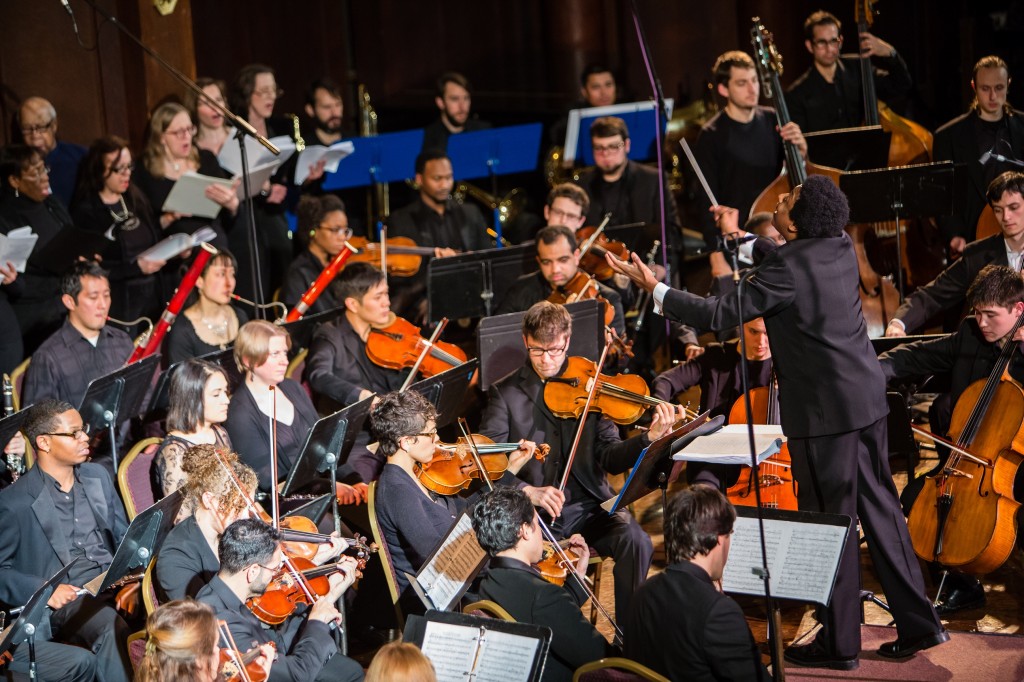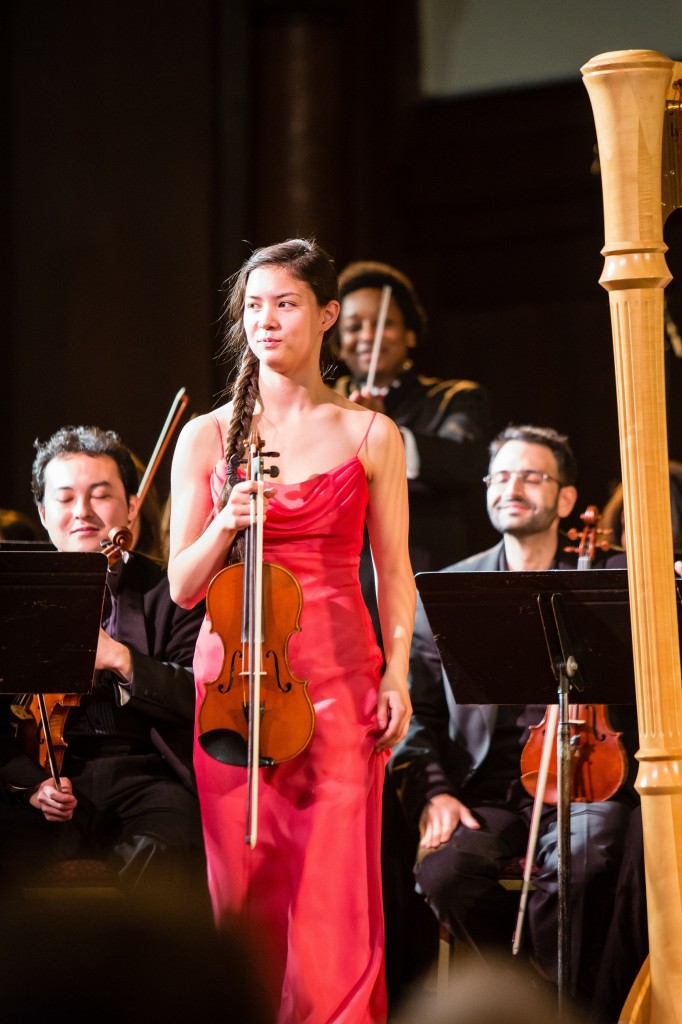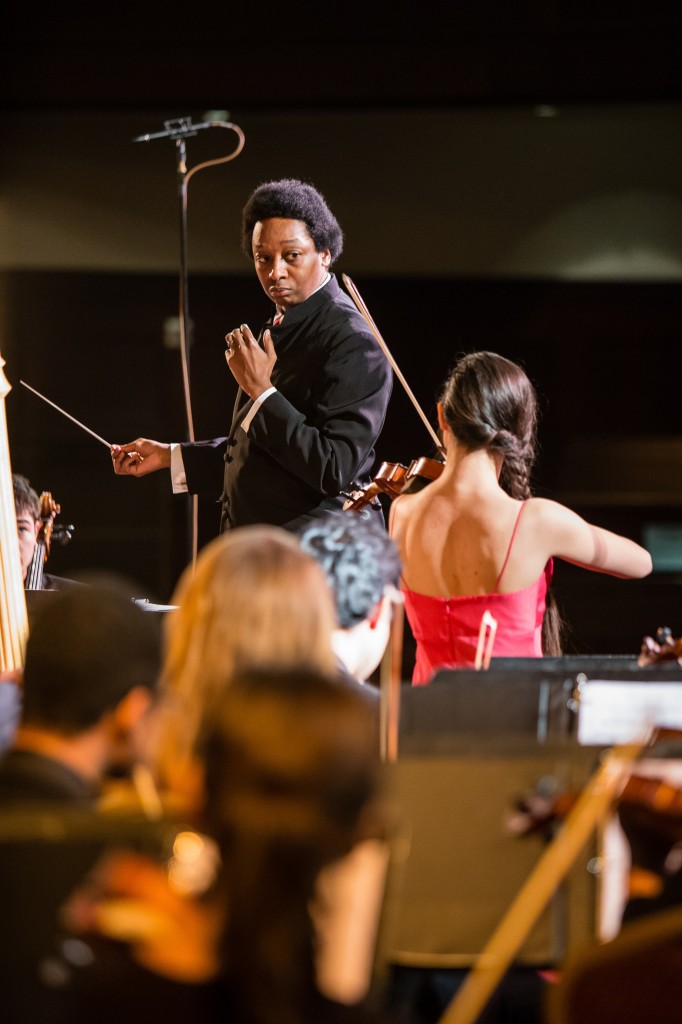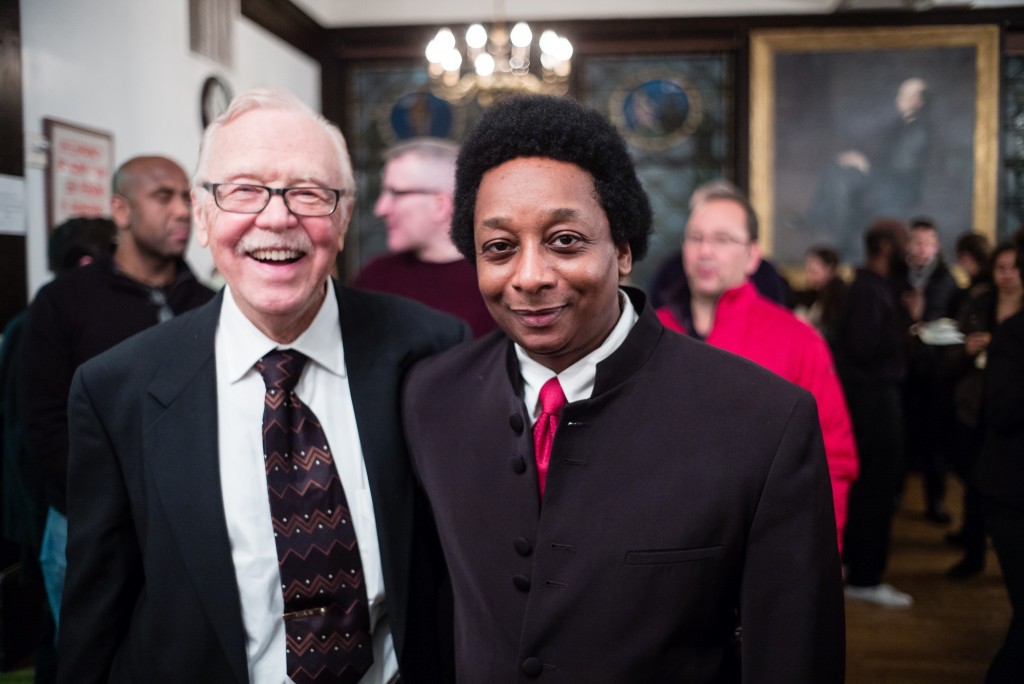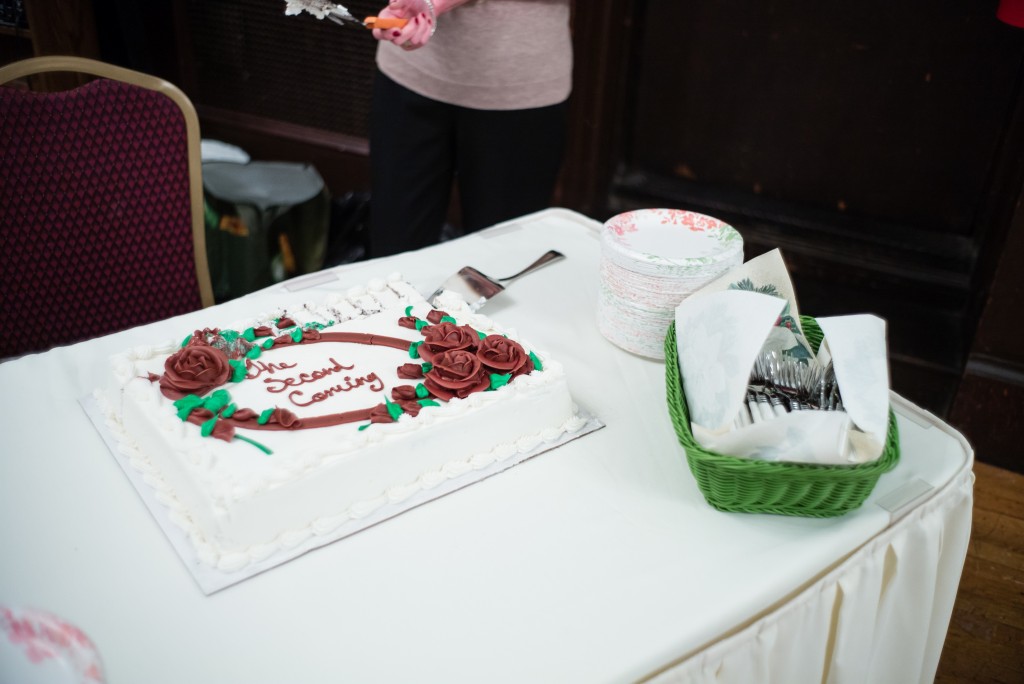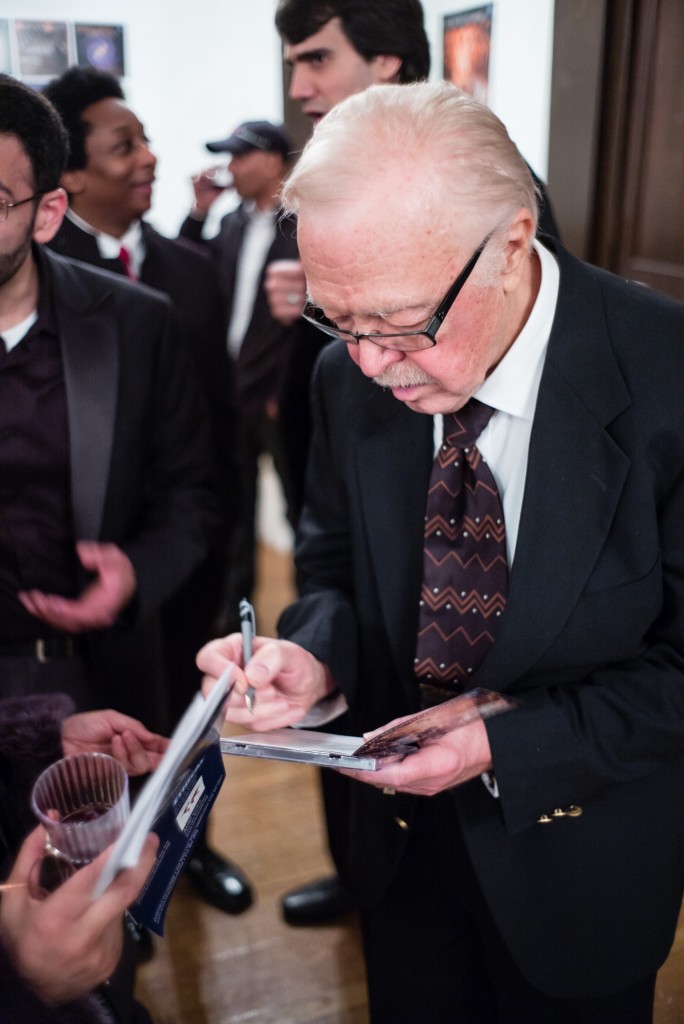In a concert to celebrate the release of the CD recording of The Second Coming by Hampson Sisler (b. 1932) on the MSR Classics label (MSR 1489: www.msrcd.com), Ensemble du Monde, with forces fifty strong under the direction of Marlon Daniel, gave a promotional performance of this new work. Those hearty souls who braved a snowstorm to get to the Ethical Culture concert hall were rewarded with not only the concert, but a reception afterwards to meet the performers.
Also on the program was Max Bruch’s Scottish Fantasy, featuring fifteen-year-old violin soloist Gwendolyn Howard, First Prize winner of the Ensemble du Monde Young Artists Concerto Competition. The modest and self-effacing Ms. Howard shyly took to the stage, giving no hint to the miraculous transformation that was about to take place. Once the music began, Ms. Howard reflected the assurance of the professional that she is. She plays with a beautiful tone and pairs that with the technique to toss off virtuosic passages with the greatest of ease. Make no mistake: this young lady is a force to be reckoned with! It was winning from start to finish.
Clocking in at nearly one hour, the three-part oratorio The Second Coming is a music depiction of both the foreshadowing of Judgment Day (freely quoting the New International Version Bible: Matthew 24: 1-51), and the Apocalypse, as written in the Book of Revelation (freely quoting the NIV Bible: Revelation 6:1-17, 7: 6-13, and 16: 2-21). The three parts are entitled Prologue, The Seven Seals, and Bowls of Wrath. The composer was inspired by a conversation with Marlon Daniel about what was expected by some to be the Second Coming on October 20, 2012, along with Mayan prophecy’s End of Days, December 21,2012. *Spoiler alert*- Both dates were wrong.
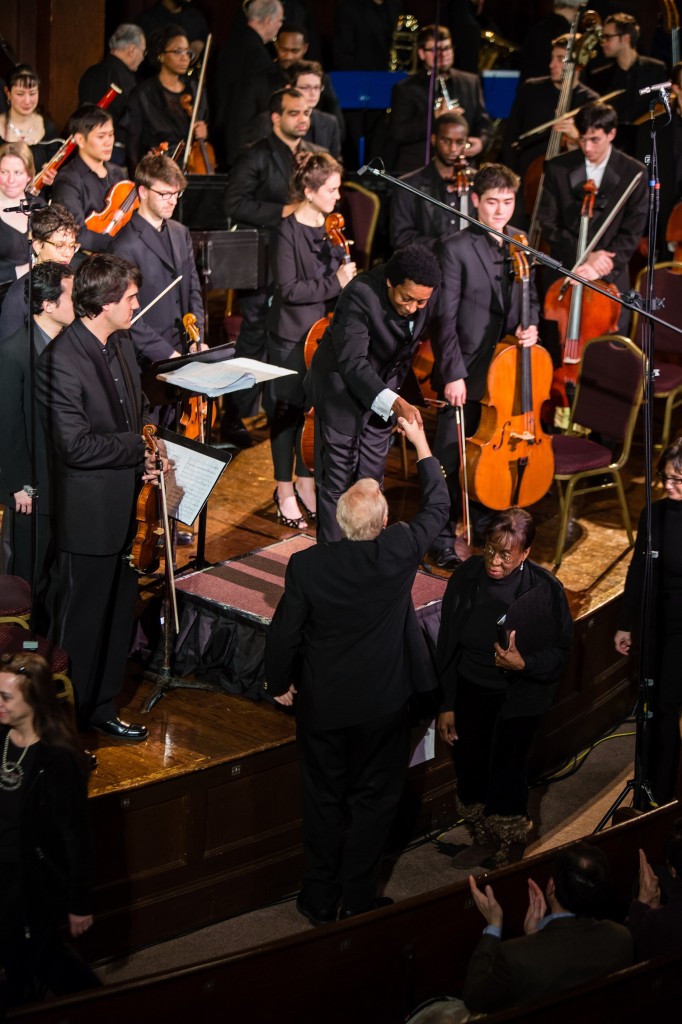
World Premiere of the Oratorio The Second Coming by H. Sisler (the composer is congratulating the conductor)
All joking aside, the subject matter is powerful and worthy of musical depiction. Mr. Sisler originally composed an orchestral work based on The Four Horseman of the Apocalypse. He took further inspiration from the subject matter and not only expanded the original work to include all seven seals, but also added the Prologue and Bowls of Wrath, both which include chorus, to form the complete oratorio. Mr. Sisler, having conceived the work in a modular fashion, has made it possible for the work to be performed in a number of different ways. The program notes make reference to five possibilities, increasing performance opportunities depending on the available forces. The modular aspect of the work, on the other hand, has the net effect of leaving uneven quality between the sections. It is natural to expect some of that in a work of this magnitude, but I did feel that the sections added later were more compelling and stronger in their conception than the earlier part. The addition of the chorus was partly responsible.
In terms of style, one would expect a work using such terrifying imagery to be full of fire and brimstone – the Verdi Requiem comes to mind as an example. Even the artwork on the CD cover, with the Four Horsemen of the Apocalypse and the opening of the Heavens, suggests terror. Mr. Sisler has a different interpretation, that while he incorporates moments of strife, his rendering is largely a philosophical examination of the causes and effects of events rather than a dramatic rendering of the events themselves. While I did not find this approach to be immediately compelling, it was nonetheless an interesting conception that did give one pause to reflect.
The writing is highly chromatic, and while there are moments of stridency and dissonance, it is always tonally accessible. The choral writing is simple in form, with large amounts of recitativo throughout. The first section, Prologue, has stylistic similarities to Copland (especially Lincoln Portrait) and in my opinion is the strongest section of the work. My objections are strictly on stylistic preference; Mr. Sisler is a composer of skill and craftsmanship, whose music appeals to a wide audience.
Conductor Marlon Daniel was an attentive and steady guiding force. The Ensemble du Monde, with the exception of a few mishaps, most notably some cracked notes in the brass, gave The Second Coming an excellent performance. The composer joined the performers at the end for well-deserved congratulations.


